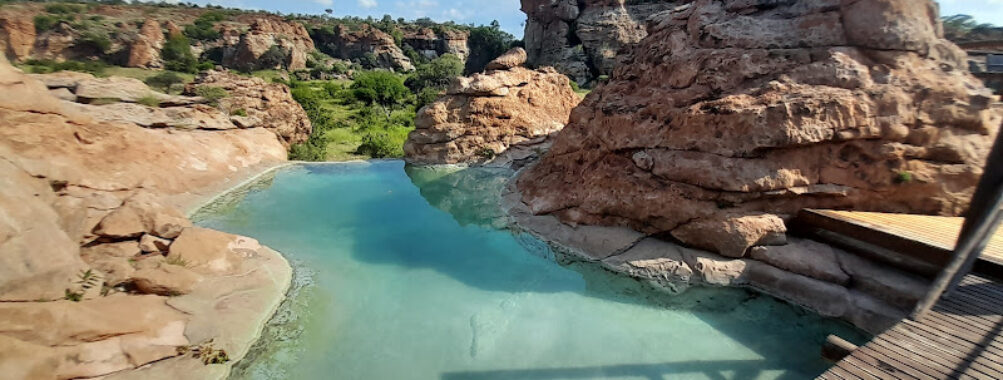
Mapungubwe National Park
Table of Contents
Description
Mapungubwe National Park stands as a testament to South Africa’s rich cultural heritage and natural beauty. Located at the convergence of the mighty Limpopo and Shashe Rivers, this UNESCO World Heritage site tells a fascinating story that spans over a thousand years. You’ll discover the remains of an ancient African kingdom that thrived here between 1050 and 1270 AD, where nobles once ruled from a hilltop palace, orchestrating a sophisticated trading network that stretched as far as China.
I remember my first visit – standing atop Mapungubwe Hill as the sun painted the sandstone cliffs in shades of amber. The landscape below unfolded like a living canvas, with baobab trees dotting the savanna and elephants ambling along ancient pathways. The park’s diverse ecosystems support an incredible array of wildlife, from nimble klipspringers scaling rocky outcrops to fish eagles soaring overhead.
Key Features
• Ancient archaeological site showcasing the remains of South Africa’s first kingdom
• Confluence viewpoint where three countries meet – South Africa, Botswana, and Zimbabwe
• Over 400 bird species, perfect for avid birdwatchers
• Home to four of the Big Five – leopard, lion, elephant, and white rhino
• Unique sandstone formations and spectacular cliff faces
• World-class interpretive center with artifacts from the ancient kingdom
• Tree-top boardwalk offering amazing vantage points
• San rock art sites scattered throughout the park
• Diverse landscapes from riverine forests to savanna grasslands
• Heritage tours led by knowledgeable local guides
Best Time to Visit
The park really shines during the dry winter months from May to October. Trust me, I’ve been here during both seasons, and while the summer rains create a lush landscape, the winter offers better wildlife viewing opportunities. The vegetation thins out, animals gather around water sources, and the temps are way more comfortable for exploring the archaeological sites.
Early mornings and late afternoons provide the best light for photography and wildlife spotting. If you’re into birding, the summer months between November and February bring migratory species, but be prepared for afternoon thunderstorms and sticky humidity.
How to Get There
Getting to Mapungubwe can be bit of an adventure – but that’s part of the fun! The park is about a 6-hour drive north of Johannesburg. You’ll want to take the N1 highway toward Polokwane, then head west on the R521 toward Alldays. The last stretch of road isn’t the smoothest, so a high-clearance vehicle is recommended, especially if you’re planning to explore the park’s more remote areas.
The closest airport is Polokwane International, about 3 hours away. You can rent a car there, but make sure to stock up on supplies in Musina or Louis Trichardt – there aren’t many shops near the park.
Tips for Visiting
Book your accommodation well in advance, especially during peak season. The park offers various options from camping to luxury lodges, but they fill up quick. I learned this the hard way on my first visit and ended up camping (which turned out to be amazing, actually!).
Pack plenty of water and sunscreen – the African sun is no joke here. Wearing neutral-colored clothing helps when wildlife viewing, and don’t forget your binoculars. The park’s heritage tours need to be booked ahead, and they’re totally worth it – the guides share incredible insights about the ancient kingdom that you won’t find in any guidebook.
If you’re into photography, bring a good zoom lens for wildlife shots and a wide-angle for those spectacular landscape vistas. The light during golden hour is absolutely magical, especially from the confluence viewpoint.
During summer, insect repellent is essential, and always check your shoes for scorpions in the morning (speaking from experience!). The park’s roads are mostly unpaved, so take it slow and enjoy the journey. And keep an eye out for elephants – they have right of way here!
Pro tip: download an offline map before you arrive. Cell service can be spotty in some areas of the park. And if you’re interested in the archaeological sites, try to schedule your visit when the interpretive center is open – the artifacts they’ve uncovered here are mind-blowing.
Location
Places to Stay Near Mapungubwe National Park
Find and Book a Tour
Explore More Travel Guides
No reviews found! Be the first to review!